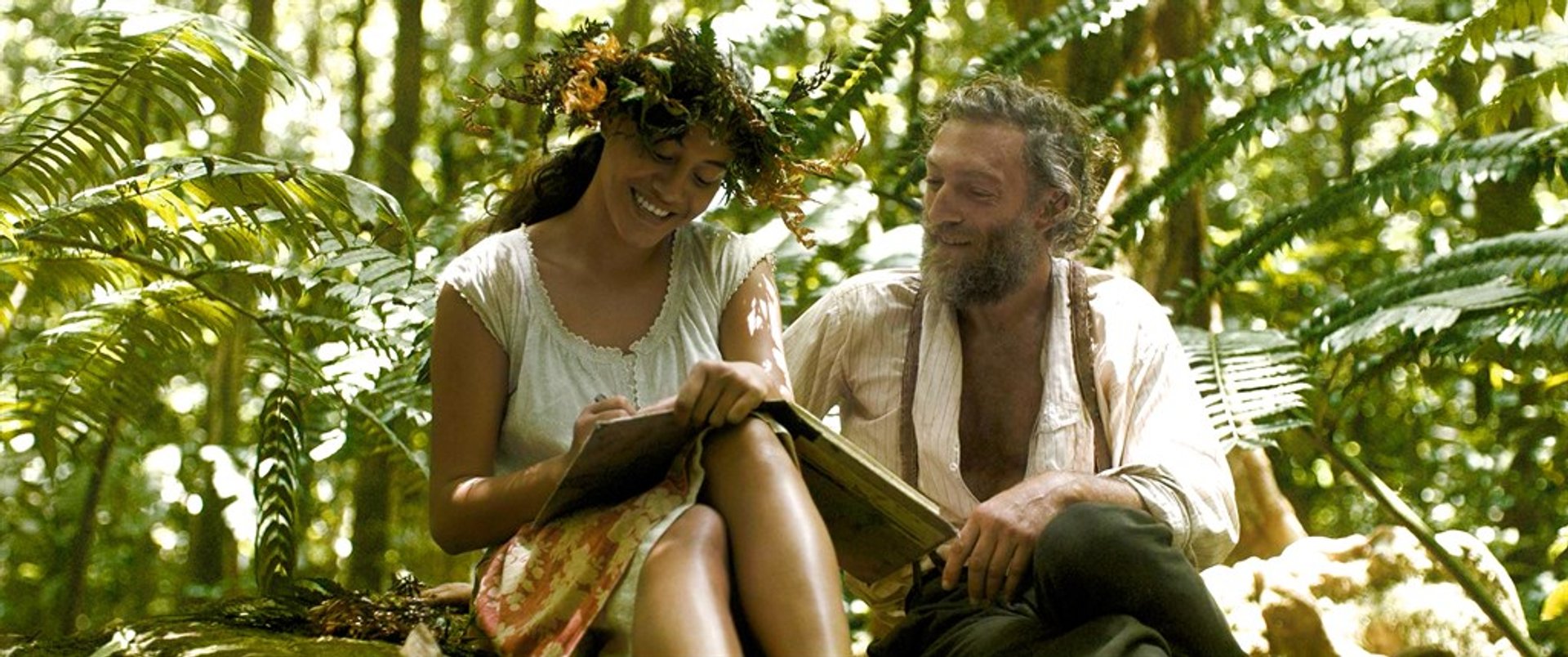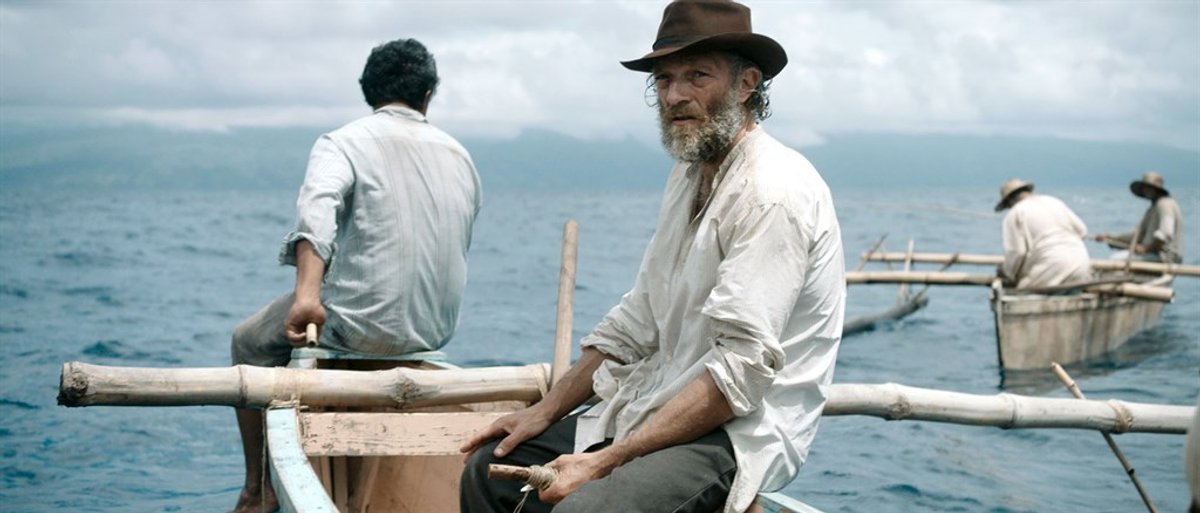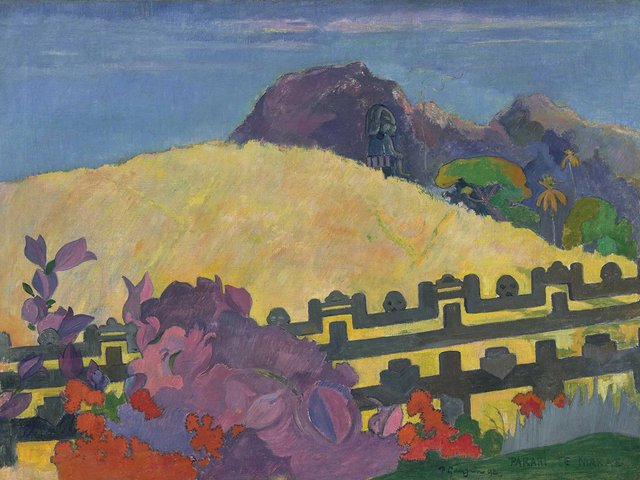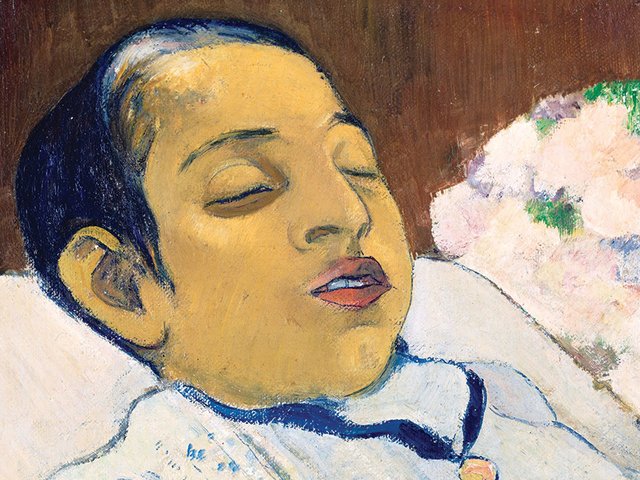Gauguin: Voyage to Tahiti, directed by Edouard Deluc, follows the painter Paul Gauguin on his journey to Tahiti, into a collision with another culture and with himself. The French actor Vin-cent Cassel, known mostly for his action roles, plays the bearded artist who paints, suffers, drinks and glares.
Gauguin as seen on the big screen has usually been the relatively sane companion to an un-hinged Vincent van Gogh. Here he is centerstage—or rather center-hut—and rarely far from the adolescent girl who becomes his wife and model.
With sun, sex and art, Gauguin would seem to have the right ingredients for drama, or at least for visual wonderment. But Tahiti can be dreary if you are Paul Gauguin. Despite a wrenching performance from Cassel, whose face is a landscape unto itself, the slow somber film is heavy on anguish, but does not give us much paradise or much painting.
The story is well known, inspired by Noa Noa, Gauguin’s account of his time in Tahiti written a few years later. In 1891, a bored and broke Gauguin leaves his wife and five children for French Polynesia. He meets and paints a young girl and other indigenous subjects. He struggles, and returns to France in 1893.
For a story that promise a stunning landscape at the least, Deluc provides that sparingly. Scenes in crowded taverns and cramped apartments with Gauguin and his five children could make anyone yearn for the South Seas. Here, however, Tahiti’s rugged interior often looks dismal, like an outpost in a dusty western, fitting considering the film that Deluc improbably cited as his inspiration: The Assassination of Jesse James by the Coward Robert Ford (2007). Take that languorous pace and add a brooding soul.
Yet this film does have some flair. After a feverish Gauguin collapses upon reaching a settlement in the interior, local children steal his paints and decorate their bodies. Body-painting (along with tattooing) was and is an important part of Oceanic culture. Watching Cassel as Gauguin scramble to grab the self-painted children and recover his pigments is a clever look at the distances between the colonisers and the colonised.
The other cultural distance, which critics will foreground, involves Gauguin and local women, particularly the young Tehura (played by Tuheï Adams), the 13-year-old who is offered by her family to the painter as a wife. We are sure to be told that in the local culture, teenaged girls of child-bearing age were considered to be women. Yet Tehura’s availability seems to affirm Gauguin’s position of colonial privilege. Even if he is a painter without cash or canvas to paint on, he is still French. If there is a political side to the story of Gauguin as an exploiter, however, it is underplayed by Deluc in favour of a misunderstood genius in this biopic boilerplate.

Tuheï Adams and Vincent Cassel in Gauguin: Voyage to Tahiti
After Gauguin teaches a young man, Jotepha (played by Pua-Tai Hikutini), to sculpt wood, he hones that skill and copies the older man’s work in objects that he sells to French travellers. Gauguin the westerner fumes that Jotepha is not following his own soul. The Tahitian says that the tourists want to buy them. Once again, an enterprising imitator overtakes his teacher in the art marketplace.
Jotepha, enriched by those sculptures, buys fancy French suits and takes up with Tehura, and the film becomes something that the Frenchman who fled modern life cannot escape—a love triangle, with outbursts of fury and silent rage underneath Cassel’s beard. What would a French movie be without infidelity?
And what would a film about the painter be without the shadow of Vincent van Gogh, who is dead by the time Gauguin starts his voyage? Like Van Gogh in St Remy, an ailing Gauguin is committed to a dreary colonial hospital. The restless soul ends up painting on the window of his room when he cannot get paper. Is he crazy or a determined artist? Both, of course. Once again, Gauguin the film plays to type.

Vincent Cassel in Gauguin: Voyage to Tahiti by Edouard Deluc




